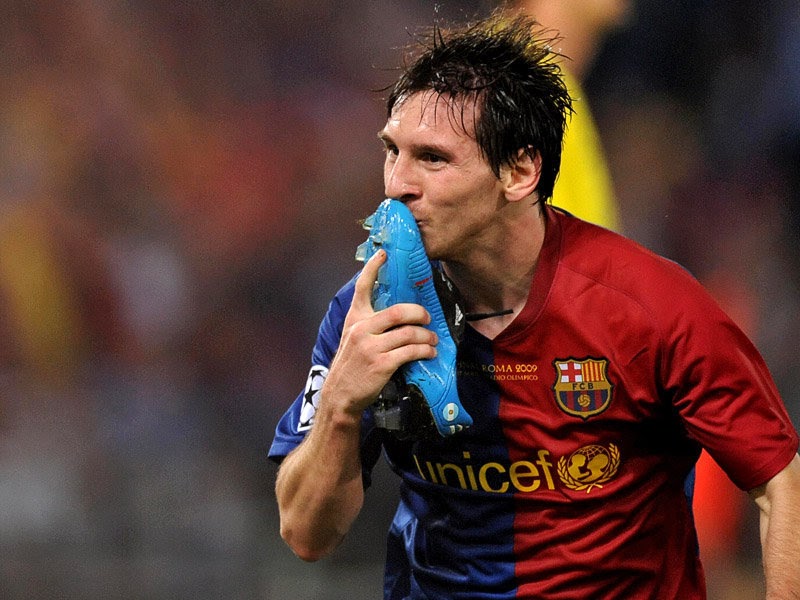Lionel Messi, the little boy who became the greatest in history
For many, the greatest player of all-time suffered an illness during childhood that stopped him from growing normally. He was able to develop thanks to the medical treatment which Barcelona funded. Leo changed modern football history.
PSG player Lionel Andrés Messi was born on 24 June 1987 in Rosario, Argentina. He will be forever historically linked to FC Barcelona, the club that changed his life and helped to cure an illness that had afflicted him since childhood. After several years of doubts, Messi grew in every sense and ended up becoming one, if not the best player in the history of the game.
The Argentine ace was born in a working class neighbourhood in Rosario and was Jorge Messi and Celia Cuccittini’s third child. Aged just four years old, Messi started playing football at his local club in his neighbourhood, Abanderado Grandoli. His grandmother, Celia Oliveira Cuccittini, was the one who encouraged little Leo to play football from a young age. Even then, Messi would always point to the heavens whenever he scored a goal, a gesture dedicated to his grandfather since the day he passed away.
“My grandmother would tell them, ‘Bring him on’. And they would reply, No, no, he’s too little’. ‘Put him on, he’ll save the game,’ she would say. Then there would be an argument. A few words were exchanged then they put me on. In the end I scored two goals that day,” Messi recalled in an interview with TyC Sports.
In 1994, he started playing for the youth teams at Newell’s Old Boys, a club which is close to his heart. During his six years there, he played 176 games and scored 234 goals – an average of 1.33 goals per game, extraordinary figures for a player of his age. By the time he was 10 years old, the club doctor started to notice that Leo was unusually small for a boy of his age and didn’t seem to be developing like the rest of his team mates. He was diagnosed as having a growth hormone deficiency which affected his physical development and threatened his future career.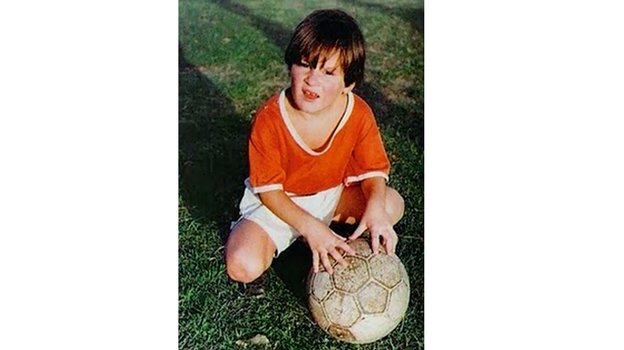
When he reached 11, he measured just 1.3 metres tall – the average height of an 8-9-year-old. Many players’ careers have been cut short during childhood because they haven’t developed sufficiently and it seemed that there was no solution to Messi’s growth problem. The origin of the deficiency was down to hypophysis, a defect in the pituitary gland which regulates the release of hormones. Studies were carried out to see if he needed specialist treatment so that his muscles and bones would start to develop.
Eventually, doctors decided that there was just one solution to treat little Lionel, but it was a very expensive treatment. The family paid for the first few months of treatment but it was almost impossible for them to continue financing it indefinitely. That was when FC Barcelona entered the picture. The Catalan club signed Messi and helped his family to pay for the treatment. They could see the player had talent. It involved daily injections to alleviate the condition, a process which could be traumatic for a boy of his age.
In 2000-2001, he started to train with Barcelona’s Under-13s. He was still seven centimetres below the average height, but now there wasn’t so much of a difference. He continued with the treatment while making the first steps in what would eventually be his new home. He started to stand out in games and little by little, made his way up through the different categories. By the end of the treatment, he was 1.70m tall. Without those growth hormones, it is estimated that his height would not have surpassed 1.55m.
He started to make a name for himself in Barça’s youth academy. In the 97 matches he played from the Under-13s, through the Under-16s, Under-19s and B team, he scored 89 goals.
Messi won four Champions League titles (2006, 2009, 2011, 2015), 10 Spanish leagues, seven Ballons d’Or (2009, 2010, 2011, 2012, 2015, 2019 and 2021). He has also won 22 awards for being the maximum goal scorer in various competitions (league, Cups…). In Messi’s trophy cabinet, there is simply no room for any more individual awards, the only one he is lacking is the MVP for the 2022 World Cup…
In the summer of 2021, the saddest moment in Leo Messi’s career arrived. He had to leave Barça because it was economically impossible for the club to pay his wages and remain within the salary cap limit, which was a huge blow for him. On top of that, he left the club as a free agent. Twelve months earlier, he had fallen out with president Jose Maria Bartomeu, who he felt had “tricked” (in his words) various first team players.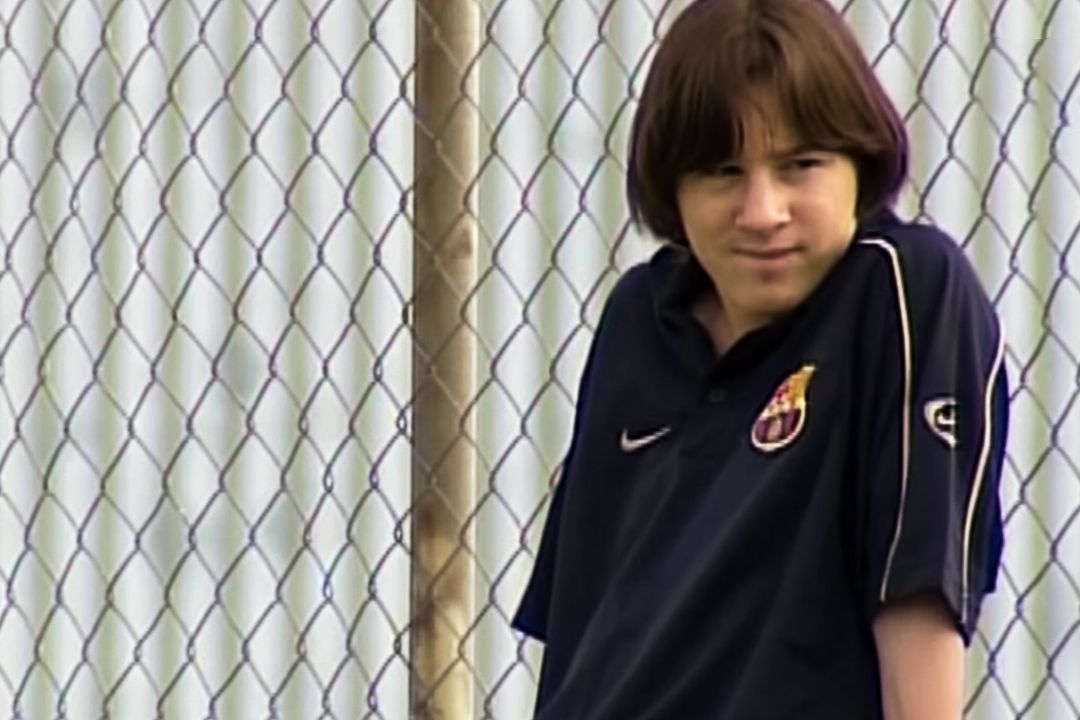
With Argentina, he made his senior debut on 17 August 2005 in the 1-2 win over Hungary. From that moment, the country realised that it had found Maradona’s successor. In 164 appearances, he has scored 90 goals. After losing several Copa América finals, he finally managed to win it for the first time last summer as part of a strong Argentina side. He ended as the MVP and the team’s leader.
This season, he has returned to a high level. In the first 18 games, he has contributed 12 goals and served up 14 assists. Messi’s final days with Argentina’s senior side are drawing nearer, and this will be his final chance of winning the World Cup. Maradona led Argentina to glory in 1986, and if Messi can win this edition, he will make a big statement in the debate about who is the best player in history.
Lionel Messi Biography – Facts, Childhood, Family Life & Achievements
Childhood & Early Years
Lionel Messi was born to Jorge Messi and Celia Cuccittini in Rosario, Santa Fe Province. He has three siblings, two elder brothers Rodrigo and Matias, and a sister, Maria Sol. His father was a factory steel worker and his mother was employed as a part-time cleaner.
At the age of five, Messi started playing for the Grandoli, a local club coached by his father. By the time he turned eight, he was playing for Newell’s Old Boys. The group was immensely talented, which is visible from the fact that they lost just a single match in the next four years. It was their sheer interest and talent for the game that made the group popularly known as ‘The Machine of ’87’
Unfortunately, Messi was diagnosed with a growth hormone deficiency when he was eleven.
It was at this juncture that Carles Rexach, the sporting director of FC Barcelona, came to his aid. He promised to offer help to Messi by paying for his medical bills only if the latter moved to Spain. Messi was enrolled at the Barcelona’s youth academy.
Continue Reading Below
Career
Messi’s career kickstarted in the year 2000 when he played for the junior system ranks. Within a short span, he became the only player to play for five different teams.
His excellence at the game was visible from the fact that Messi quickly moved through the junior system ranks to make a league debut on October 16, 2004 against RCD Espanyol.
His first goal came the following year on May 1, 2005 against Albacete. He created history by being the youngest to ever score in a La Liga game for Barcelona.
He received Spanish citizenship in September 2005, which finally made it possible for Messi to make a debut in the Championship League.
Messi’s first outing at the Champions League was against Italian club Udinese. Though he entered the field as a substitute, he played amazing soccer with Ronaldinho, the two sharing good chemistry over passing and receiving the ball.
Out of his 17 league appearances, Messi managed to strike six goals. However, a muscle tear in his right thigh led to his premature exit from the league, which Barcelona eventually won as champions of Spain and Europe.
In the 2006-07 season, Messi was no longer the substitute. He found himself listed in the eleven-member squad. In the 26 outings, he successfully netted the ball fourteen times. He even scored a hat-trick in El Clasico, thus becoming the youngest player ever to have scored in this fixture.
Messi’s action for scoring the goals was way too similar to Maradona’s, which resulted in him being labelled as ‘Messidona’. For a particular goal, he ran about the same distance, 62 metres (203 ft), beat the same number of players (six, including the goalkeeper), scored from a very similar position, and ran towards the corner flag just as Maradona did in 1986 World Cup match against England in 1986 .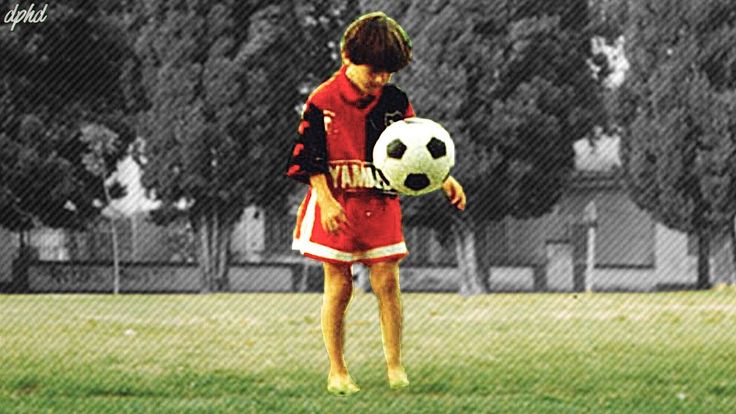
February 27, 2007 saw Messi play his 100th match for Barcelona against Valencia CF. in the Champions League, Messi scored 6 goals and provided 1 assist before his premature exit due to muscle tear. It was the fourth time in three seasons that Messi suffered this type of injury. Overall in the season, Messi had managed to score 16 goals and assisted 13 times in all competitions.
Continue Reading Below
2009 was a successful year for Messi as he not only won his first Copa del Rey, but helped his team win La Liga and finally the Champions League. With three victories by their side in a single year, Barcelona became the first ever Spanish club to win the treble. Messi scored a hat-trick quite a couple of times. He ended the season with an overall 38 goals and 18 assists record.
Before the year end, Barcelona had recorded another win at the 2009 Club World Cup beating Estudiantes, thus totalling their title won in the year to six.
2010 was a year of hat-trick for Messi as he scored against CD Tenerife, Valencia CF, Real Zaragoza, thus becoming the first Barcelona player to score back-to-back hat-tricks in La Liga.
In the 2010 Copa del Rey final, Barcelona faced their arch rivals Real Madrid. Though the defending champions lost their game to Real Madrid, Messi was however the joint top-scorer of the tournament along with Cristiano Ronaldo, with 7 goals.
As for the Champion’s League, Barcelona beat Real Madrid 2-0 in the Semi finals, with Messi scoring both the goals. In the finals too Messi scored the winning goal to give Barcelona their third title in six years and fourth overall. Messi finished the 2010–11 season with 53 goals and 24 assists in all competitions combined.
2011-12 season was a mirror image of the earlier seasons for Messi as he broke records after records to emerge as the top class player for Barcelona and the world at large. He became the second highest goalscorer surpassing Laszlo Kubala on 194 goals in all official competitions.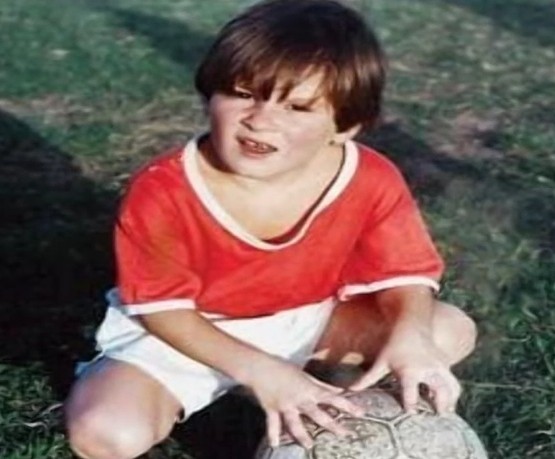
While hat-tricks and quadruples had become common for Messi, history was created when he scored five goals in a match against Bayer Leverkusen, which Barcelona won by 7-1. With this, he became the first player to score five goals in an UEFA Champions League match.
While Barcelona successfully defended their Copa del Rey title, they were defeated by Chelsea in the semi-finals of UEFA Champions League and were also unable to get hold on to the La Liga title.
Messi, on the other hand, had by far the best year or season in his career till then as he became the top goalscorer in La Liga for a second time, with a Liga record of 50 goals. He was the second best assist provider in La Liga that season with 16 assists, after Mesut Ozil, who managed 17. He also ended the season as the UEFA Champions’ League Top Scorer for a fourth consecutive time, with 14 goals.
Continue Reading Below
In 2012, Messi’s goal count rested at 91 for the calendar year which was the highest ever, surpassing Gerd Muller’s 85 goal haul. The supremely outstanding performance of Messi led to Barcelona renewing its contract with this ace footballer until the year 2018.
In the March of 2013, Messi scored for the 19th consecutive La Liga game, thus becoming the first footballer in history to score in consecutive matches against every team in the league.
Following this, Messi appeared in match against Paris Saint-Germain and later against Atletico Madrid. However, he left both of them mid-way due to suffering from hamstring problem. As a result of his injury, it is anticipated that Messi could miss all the matches for the rest of the season.
His persistent injuries posed a threat to his career but he bounced back in 2014, and had a good start to the 2014–15 season. By the end of the year, he had successfully broken three longstanding records. He scored a hat-trick against Sevilla in November which made him the all-time top scorer in La Liga.
He had an amazing start in the 2015 season. He gave a scintillating performance along with team mates Luis Suárez, and Neymar to score a total of 122 goals in all competitions that season, a record in Spanish football. Messi himself scored 58 of the 122 goals.
Continuing his streak of success in 2016, Messi scored two goals and assisted the other two in a 4–1 derby win over Espanyol at the Camp Nou in the first leg of the Round of 16 of the 2015–16 Copa del Rey in January 2016. In February the same year, he reached his 300th league goal in a 1–3 away win against Sporting Gijon.
He scored his 500th senior career goal for club and country on 17 April 2016 in Barcelona’s 2–1 home loss to Valencia.
He announced his retirement from international football following Argentina’s loss to Chile in the final of Copa América Centenario on 26 June 2016.
Following his retirement, a campaign began to urge Messi to change his decision. On 12 August 2016, it was announced that Messi has reversed his decision to retire and will be part of Argentina’s 2018 World Cup campaign.
Continue Reading Below
In the 2018 Football World Cup Messi scored a goal in the Argentina’s final group match against Nigeria and helped his team to a 2-1 victory. In the process, he became the first player to score in the World Cup in his teens, twenties, and his thirties and also became the third Argentine after Diego Maradona and Gabriel Batistuta to score in three different World Cups.
Argentina’s performance in the 2018 World Cup was lackluster and they were eliminated when they lost to France in the round of 16 match.
Following the World Cup defeat it was speculated that Messi may retire from international football once again. However, In March 2019, he was part of the Argentinian team for the friendlies against Venezuela and Morocco.
Messi made his international return on March 22, 2019 in a friendly match against Venezuela in Madrid. Argentina lost the match 3–1.
Awards & Achievements
Messi’s excellence at the field has been lauded by the world over through the numerous awards, honors and achievements that he has been bestowed with. Messi has won the prestigious Ballon d’Or five times. He has won it in 2009, 2010, 2011, 2012 and 2015.
Continue Reading Below
Messi has on a number of occasions won awards in the young player of the year category. Some of them are World Soccer Young Player of the Year, FIFPro World Young Player of the Year and Copa America Young Player of the Tournament.
Messi has in his kitty 20 Player of the Year awards including FIFA World Player of the Year (1), World Soccer Player of the Year (3), Goal.
For his knack of netting the ball to the goal, Messi has been awarded as the top goalscorer on numerous occasions. Some of them include IFFHS World’s best Top Division Goal Scorer, IFFHS World’s Top Goal Scorer, UEFA Champions League Top Goalscorer, FIFA U-20 World Cup Top Goalscorer and Copa del Rey Top Goalscorer.
Messi was honoured with the European Golden Shoe thrice in 2010, 2011 and 2012. He won the FIFA Club World Cup Golden Ball twice in 2009 and 2011. He was tagged as the European Golden Boy in the year 2005.
He was part of the Argentine football national team that won the gold medal in the 2008 Summer Olympics.
Top 10 Facts You Did Not Know About Lionel Messi
Although Lionel Messi has Spanish citizenship, he is of Italian origin.
He shares the same birthplace, Rosario, with the Argentine revolutionary, Che Guevara.
Despite his fame, he still maintains close connections with the people of Rosario, his hometown. He is also the international ambassador of Rosario.
Messi has his own version of the Hand of God goal. On 4 October 2006 in a match against Recreativo de Huelva, he scored a goal with his hand.
‘SportsPro’ has cited him as one of the world’s most marketable athletes every year since 2010.
One of the world’s highest-paid footballers, he was the first player to exceed the €40 million benchmark.
He has his mother’s face tattooed on his left shoulder.
He is the only player with four FIFA Ballon d’Or awards and three European Golden Shoe awards. Additionally, he won the Golden Ball award twice and the European Golden Boy award once.
Messi holds the record for the most hat-tricks scored (four in total) in Champions League.
He is known for his excessive love for food and his favorite dish is escalope Milanese.
Messi’s childhood at Barca: never played a pass, and spent weekends on a rocking chair – 11 friends of Zinchenko – Blogs
11 friends of Zinchenko they will have to work with a unique child. Coach Rodolfo Borrell was the first to face difficulties. To a simple request to play on the flank, Messi retorted: “I am enganche.” It was his direct demand – to play freely, without being tied to a position.
During training with Messi, it was difficult to work in pairs – he enjoyed individual exercises much more: he liked practicing shots and tasks for speed. “It was difficult for me to pass the ball, I constantly forgot to do it” , Leo said in an interview with El Grafico.
The habit that Messi has had since childhood is the unwillingness to work in defense. It’s not about laziness – for Leo, pressure was something incomprehensible and illogical.
“When he got here, he didn’t even consider going back, and the rule of direct play doesn’t work here. Our norm is to attack from behind with the ball, trying to find the possibility of a horizontal pass, and move across the field. “If I see a goal and I want to score a goal, then why should I go back when it’s easier to go forward?” – Leo thought so, ”recalled one of Messi’s first coaches, Javi Llorens.
At the same time, Messi had a great passion for training. We are used to the fact that the star and king of the gym is Cristiano. Messi is unlikely to move his embossed colleague, but as a child he also spent his free days on a rocking chair:0003
“Viktor Vazquez and Piqué stretched out on the mats and tossed a tennis ball between them, while Messi, the imp, worked on his own. As if he had a coach with him. I’m not sure that he did everything right, maybe he did not do what he should have done, but I remember how unusual it was, ”said Rodolfo Borrell.
Leo’s main problem was his complex nature: it was impossible to talk and make friends with an Argentinean. During pauses in training, Messi drank water alone, holding the ball under his arm or pressing it with his feet, but always next to him. He had fun juggling a ball while the others talked about plans for the day, school or girls.
Messi was the first or the last to take a shower – when there was no one else in the dressing room. More often than not, he was there first, changed in five minutes, and then raced to meet his father, who was waiting for him outside. In the locker room, they thought that Messi was afraid to go to the shower with the others. This continued until Gerard Pique figured out how to get Leo to talk.
Piqué hid Messi’s clothes while he was washing by hanging them on another hook. Coming out of the shower in one towel, Messi immediately became worried – he could not find clothes. The five or six boys in the locker room laughed but quickly returned the clothes to him before the situation got out of hand.
“Where are you from? How did you get into this team? You can tell us – we don’t bite,” Piqué said.
“I’m sorry, I’m just silent,” Leo replied.
Piqué opened the door for him. From that moment on, Messi began to talk with his teammates much more.
Lionel Messi is one of the best football players of our time
Views 11416
Lionel Messi is the first footballer to win four Ballons d’Or, an Olympic champion, multiple Champions League winner and just a happy husband and father. What is the secret of the enchanting success of the great football player?
Messi’s biography
The famous Argentine athlete was born in 1987 in the port town of Rosario. In addition to the future champion in a large family of factory worker Jorge Horacio and cleaner Celia Maria, there were two older sons and a daughter. So Messi’s childhood was more than modest. But this did not stop him from dreaming of football – at the age of five, little Lionel began to play in the amateur Grandolini team.
When Messi was ten years old, doctors gave him a threatening diagnosis – a lack of growth hormone. This could have ended the career of a football player, but Lionel’s father did everything to help his son. Since the family did not have money for very expensive medicines, and local football clubs refused to pay for the treatment, it was decided to go to the Spanish Barcelona for a tryout.
Fortunately, the team management managed to consider the potential of the young talent and paid all the bills. At the age of 13, Messi got into the youth team of the club and easily scored four goals in the first game. The boy’s family moved to live in Europe.
Footballer’s career
- In 2003, Lionel was transferred to the first team of Barcelona – very soon the whole world started talking about the footballer. After his debut, El Mundo newspaper described him as a player “with Maradona’s foot, Cruyff’s speed and Ronaldinho’s pass”.
- In 2004, Messi participated in the Champions League for the first time, clashing with Ukrainian Shakhtar. A year later, Lionel had to miss the final match due to an injury, but this did not stop him from receiving the Golden Boy title – he was named the best young player of the year.
- 2006 brought world fame to the football player: his hat-trick in the Spanish Championship allowed him to finish the match with a draw and secured an honorable third place for Messi in the Golden Ball nomination and second in the FIFA Diamond Ball nomination. Messi’s participation in games for Barcelona has become regular.
- In 2009, the football player received the highest award in his sport – he receives the Golden Ball as the best player. Lionel will have to hold this prize 3 more times – it is not for nothing that he is considered the best football player of our time and one of the greatest players of all time. In 2009year the club decides to extend the contract with Messi until 2016 (the amount of compensation for it was 250 million euros).
Athlete’s personal life
Success did not turn Messi’s head – he remained a modest man. Journalists managed to find out only about three novels of a football player, the last of which ended in marriage.
Until 2009, Lionel had a short relationship with the Argentine model Luciana Salazar, and later a short romance happened with fellow countrywoman Macarena Lemos.
In 2009, Messi falls in love for real. His chosen one was Antonella Rokuzzo, whom the footballer has known since the age of five, as he was friends with her cousin. Three years later, the couple found out that they would have a baby, which Lionel told the fans right on the football field, putting the ball under his T-shirt. Thiago Messi was born in 2012 in a Barcelona hospital. The happy father got a tattoo with the image of his son’s hands and his name on his left leg. Three years later, the couple had a second son, Mateo Messi.
Personal happiness did not deprive the athlete of the ability to empathize with other people – Messi is actively involved in charity work. He regularly donates funds to children’s hospitals in his hometown, and once completely paid for the treatment of a Moroccan boy suffering from a lack of growth hormone (a disease that almost ruined Lionel’s career).
Messi’s style
Despite his modesty, the football player admitted that he likes to dress smartly. But at the same time, the outfit, in his opinion, should remain comfortable. For every day, Messi chooses a casual style: worn jeans, T-shirts with original prints or hoodies and comfortable sports shoes.
For formal events, Lionel chooses designer suits. So, the football player came to the ceremony of presenting the fourth Ballon d’Or in an outfit from D&G.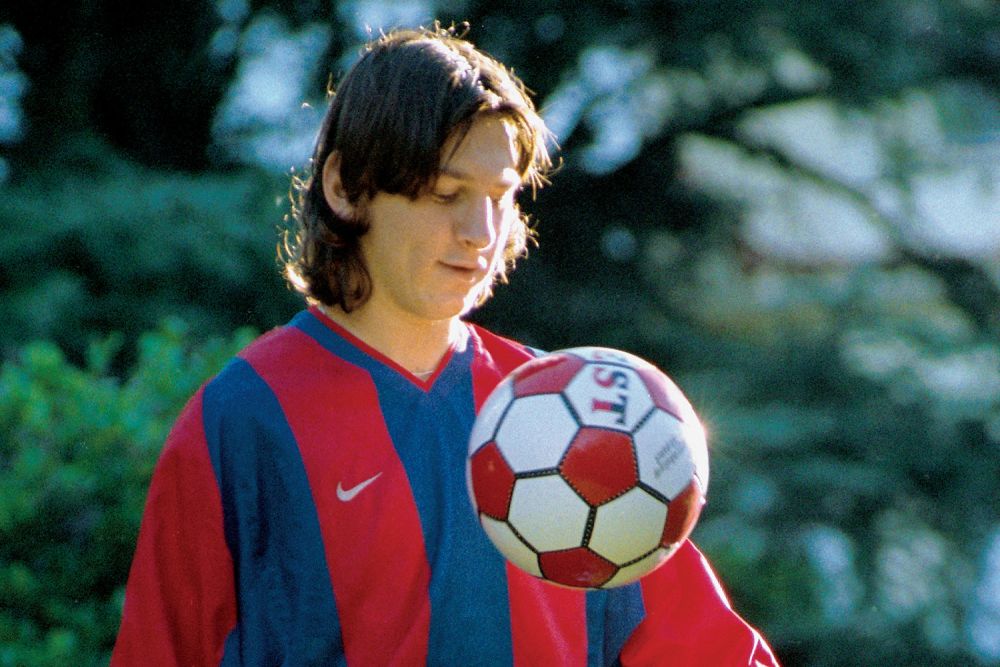
As for Lionel’s hairstyle, he is very conservative in this. For many years now, a laconic classic haircut has flaunted on his head, which does not require special styling. Sometimes an athlete allows himself to slightly modify his hairstyle by slightly shaving his temples or putting his hair in a mohawk using styling products.
Messi joined the clan of bearded men for a short time – but he only dared to grow a small stubble, and even then only for the time of rest.
Interesting facts about Messi
- Lionel was born in the same city as the famous Argentine revolutionary Che Guevara.
- The football player has Italian roots, his great-grandfather emigrated to South America in 1883.
- Messi’s parents allowed him to skip school for the sake of training, but it was strictly forbidden to miss the latter.
- The athlete grew to 169 cm and then only thanks to medication, otherwise he could hardly have reached 140 cm.
- In 2008, Messi took the number 10 for himself, having inherited it from Ronaldinho, who moved to Milan.
- After each goal scored, Lionel mentally thanks his late grandmother, as it was she who insisted the boy attend football school.
- Messi has several nicknames: Atomic Flea, Kid, Leo, Flea. In the press occasionally slip – Maradonit and Messidon.
- According to legend, Lionel signed his first contract with Barça on a napkin. There was just no paper at hand.
- Messi is in second position in the list of the richest athletes in the world, losing the palm to his eternal opponent – Cristiano Ronaldo.
- The average daily income of a football player is almost 130 thousand dollars. (this includes salaries at the club and income from advertising campaigns).
Lionel Messi proved to the whole world that neither a poor background nor a serious illness can stand in the way of a real dream.


